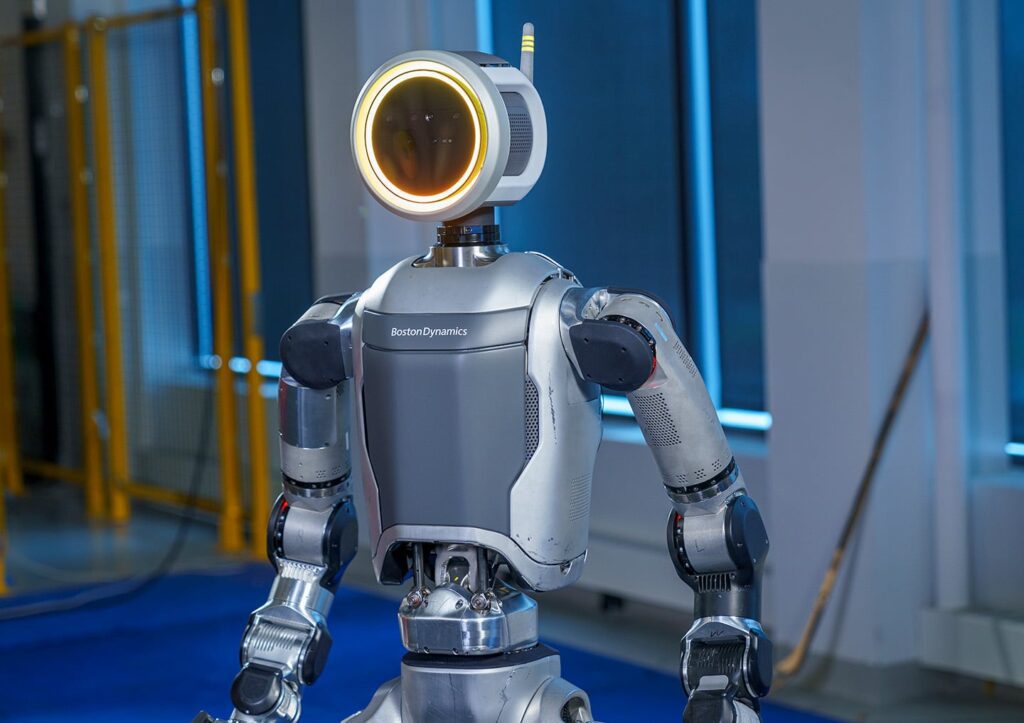Artificial Intelligence
Cyber
Future Telecoms
Materials
Net zero
Quantum
Robotics
Wise words and waggishness… January 2026
Reading time: 13 mins
More than just a bit of metal to plug the skills gaps
Every year, I get the same phone calls from radio producers: “New Year is approaching and we’d like to look ahead to what might be coming. Can you come and make some predictions?” For all my protestations that I’m not Mystic Meg, once a year, it’s fun to have a go. So, 1 January 2024, I jumped on a call with a presenter and a couple of other guests, and suggested that this would be the year of the android. Eighties sci-fi dreams – and nightmares – made real.
To understand why I thought 2024 would be such a big year for the humanoid robot, you have to look at four different sets of signals.
The first set came from robot manufacturers like Boston Dynamics, Figure, Sanctuary AI, and Tesla (yes, it makes robots too). These companies were trailing big announcements, and real customer deals looked to be on the near horizon. Sure enough, in January, Figure signed a commercial deal with BMW, and then in April, Sanctuary AI did a deal with automotive parts manufacturer Magna. Neither of these deals is going to see thousands of robots moving into factories. But they showed serious companies committing to general purpose robotics.
The second set of signals come from the supply chain. What do you need to build a humanoid robot? Powerful and compact motors, sensors, and high-performance processors. All of these components have been advancing rapidly because of high-volume adjacent industries: smartphones, drones, electric vehicles. Volume drives not just rapid advancement but falling prices and rising skills availability. It began to look like the supply side was sorted: humanoid robots should be an affordable commodity before long.
The third set came from the broader context. Our ageing population. Huge gaps in the workforce. Humans still doing jobs that frequently maim and kill. It is pretty clear that we’re going to need some sort of automation in the years ahead, unless we want to completely rewrite our expectations for work or rapidly “degrow” the economy.

So then you turn to demand: why would we want humanoid robots specifically? After all, humans are pretty limited. Our form factor isn’t best suited to pressing steel, lifting large objects, or very rapid movement. Why would you want humanoid robots in the workplace when you could have specialist systems?
To answer that question you have to understand the workplace itself. Many companies are old. Systems and processes are almost as deeply embedded as behaviours and culture. Specialist robots require you to change the process. Redesign the infrastructure. Consciously change the culture. Humanoid robots can be a straight swap. No big, visible changes. Just one day, a shiny new worker doing an age-old task.
General purpose, humanoid robots should be relatively cheap because they’re made in volume for many different tasks. Training them should be relatively easy: if you have a human being who knows what to do, they can show the robot. They don’t have to think about which axes it can move in or how it changes a tool head: it has the same capabilities as they do, so teaching is intuitive.
One robot can only do part of one person’s job. A single task. But with enough general purpose androids you can cover a lot of the tasks in a manufacturing plant. Or on a building site. Or even in a care home. Right now, androids look like the answer to some of our structural labour shortages. In the long term, they might do more than just fill the gaps.

Tom Cheesewright is an applied futurist working with governments and global brands to help them to see the future more clearly and respond with innovation. He is the author of two books on foresight and the future, High Frequency Change, and Future-Proof Your Business, and a regular media commentator with thousands of contributions to TV and radio.
Quantum
Reading time: 10 mins
Quantum
Reading time: 10 mins
Future Telecoms
Reading time: 2 mins
Quantum
Reading time: 11 mins
Robotics
Reading time: 1 mins